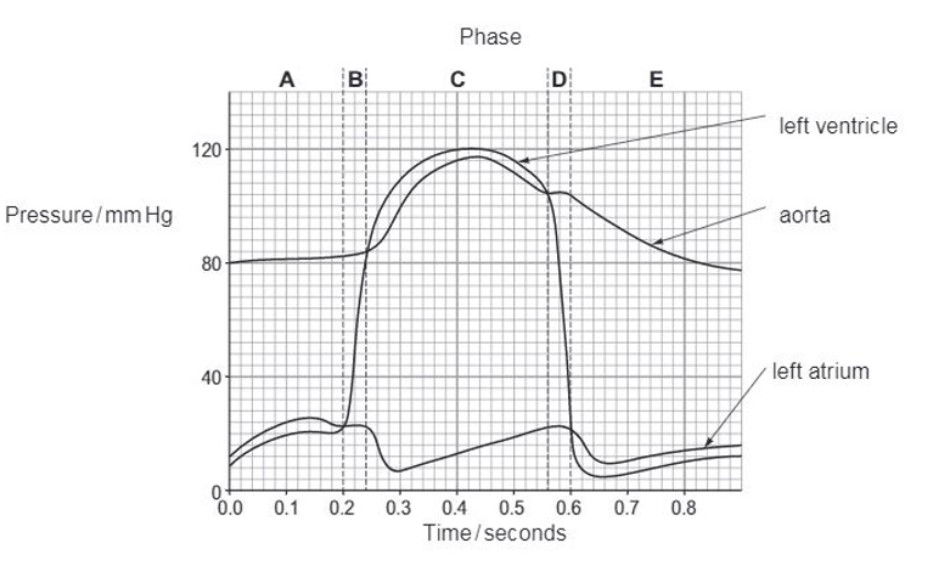The Cardiac Cycle
1/13
There's no tags or description
Looks like no tags are added yet.
Name | Mastery | Learn | Test | Matching | Spaced |
|---|
No study sessions yet.
14 Terms
What is the cardiac cycle?
The sequence of events which makes up one heartbeat.
Systole means…
Contracting.
Diastole means…
Relaxing.
Movement of blood is from a _______ to ________ pressure?
High to low pressure.
Conventionally, blood flow is described as starting with atrial systole. What is atrial systole?
When the atria contracts.
Summarise what happens in atrial systole.
Atria contract. This increases the pressure in the atria.
The atrio-ventricular valves open, allowing blood to flow through into the ventricles.
At this point, the ventricles are in diastole (relaxed).
The pressure developed during this contraction is not very great due to the thin atrial walls.
Backflow is prevented by the valves closing.
Summarise what happens in ventricular systole.
When the ventricles are full, they contract from the apex upwards.
The pressure in the ventricles increases rapidly and quickly exceeds that of the atria, pushing the atrioventricular valves shut.
Semi-lunar valves in the aorta and pulmonary artery open.
Blood is pushed upwards and into the arteries.
Summarise what happens in ventricular diastole.
The ventricles relax, causing the pressure to drop.
The semi-lunar valves snap shut to prevent backflow of blood from the arteries (into the ventricles).
Summarise what happens in diastole.
The whole of the heart muscle relaxes during diastole.
Blood from the veins flows into the atria.
The cardiac cycle begins again.
Describe the pressure changes in the heart during time interval A.
The atria are contracting, increasing the atrial pressure.
The ventricles are relaxed and the pressure in the ventricles is lower than the atrial pressure.
The slight increase in pressure in the ventricles is because blood is being pushed into the ventricles.
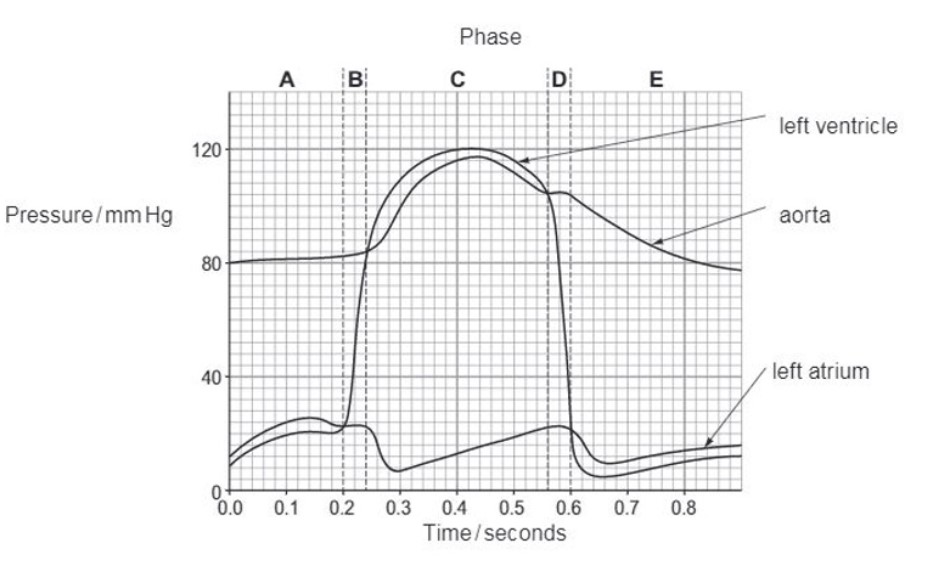
Describe the pressure changes in the heart during time interval B.
The pressure in the ventricles increases as the ventricles contract.
The pressure in the ventricles rises above that of the atria at 0.2 seconds and the atrioventricular valves (tricuspid and bicuspid) close.
At 0.24 seconds the pressure in the ventricles rises sharply and the semi-lunar valves open.
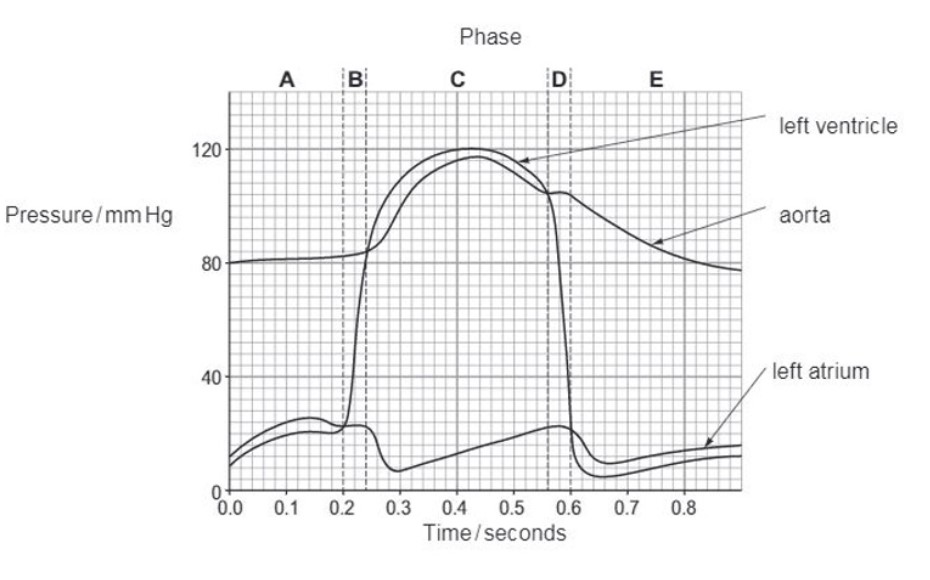
Describe the pressure changes in the heart during time interval C.
The ventricular systole causes blood to enter the arteries (pulmonary artery and aorta) and the pressure in the arteries rises.
As the ventricles start to relax, the pressure falls until, at 0.56 seconds, the pressure in the ventricles falls below that in the arteries, the semi-lunar valves fill with blood and close.
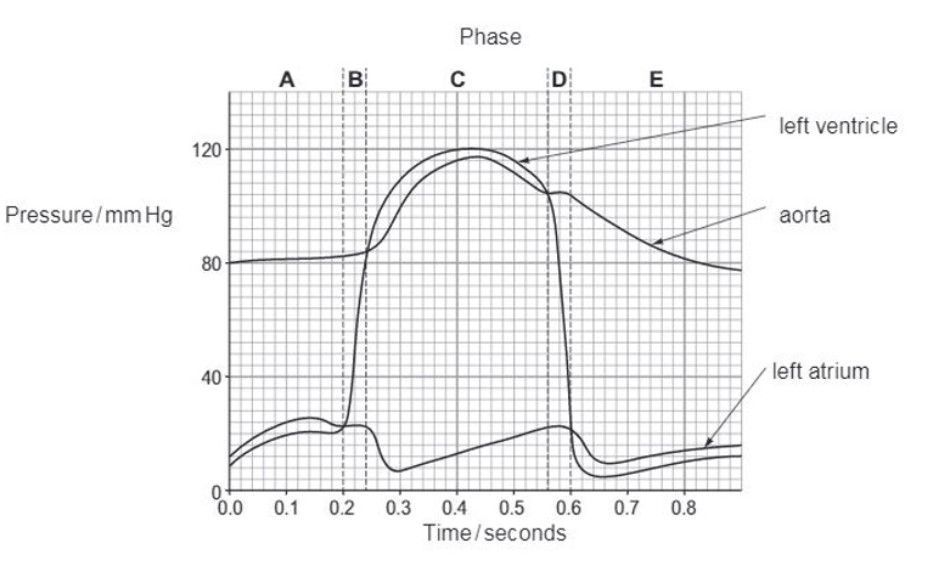
Describe the pressure changes in the heart during time interval D.
The ventricles continue to relax, and all heart valves are closed.
At 0.6 seconds, the pressure in the ventricles falls below that of the atria and the atrioventricular valves open.
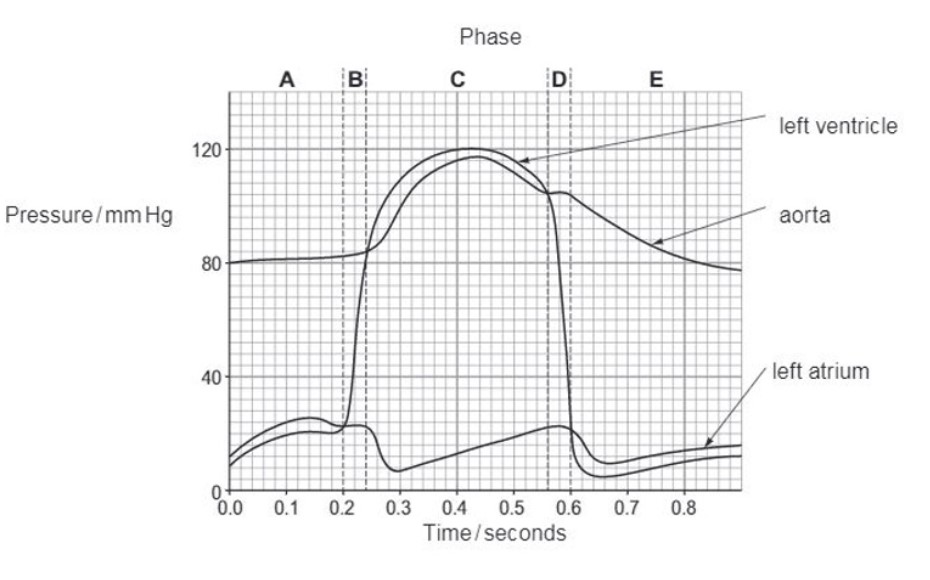
Describe the pressure changes in the heart during time interval E.
The heart is in diastole, the atria and ventricles are relaxed and blood flows from the veins, through the atria and into the ventricles, causing a slight increase in pressure as the ventricles begin to fill.
